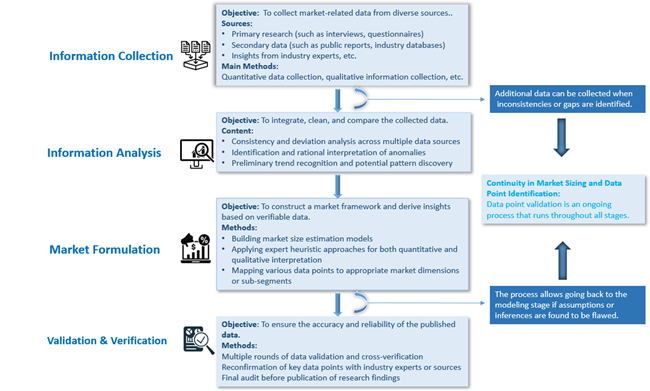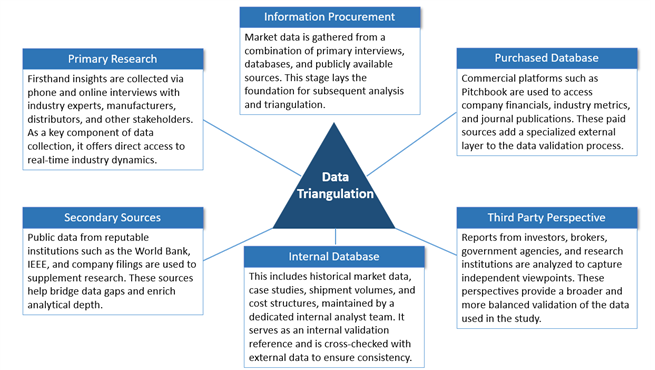High-strength, high-modulus polyethylene fiber, also known as Ultra-High Molecular Weight Polyethylene (UHMWPE) fiber, is currently the fiber with the highest specific strength and specific modulus in the world. It is spun from polyethylene resin with a molecular weight exceeding 1 million. UHMWPE ranks first among plastics in wear resistance, several times more wear-resistant than carbon steel and brass, and tens of times more resistant than conventional polyethylene. It also has a lower friction coefficient than other engineering plastics. UHMWPE exhibits excellent water resistance, impact resistance, chemical resistance, low-temperature performance, non-stick properties, non-toxicity, and excellent electrical insulation, making it suitable for a wide range of applications.
UHMWPE fiber is considered the third-generation high-performance fiber following carbon fiber and aramid fiber, with a significant advantage in impact resistance. Its elongation at break is higher than that of carbon fiber and aramid, providing good flexibility. It maintains excellent mechanical properties under high strain rates and low temperatures, making it superior in impact resistance compared to carbon fiber and aramid, and an ideal material for bulletproof and stab-resistant safety protection. The specific strength of UHMWPE fiber is 15 times that of high-quality steel, 4 times that of glass and Nylon 66, 2.6 times that of carbon fiber, and 1.7 times that of aramid fiber. In terms of impact performance, the specific impact energy absorption of UHMWPE fiber composites is 1.8 times that of carbon fiber and 2.6 times that of aramid, while its bulletproof capability is 3.6 times that of aramid armor structures. Due to its lightweight, high strength, and high energy absorption, UHMWPE fiber is gradually replacing aramid as the preferred fiber in personal ballistic protection.
The following are the key performance indicators of several high-performance fibers:
|
Fiber Type |
Density (g/cm³) |
Strength (GPa) |
Modulus (GPa) |
Elongation at Break (%) |
Decomposition Temp (℃) |
Service Temp (℃) |
|
Carbon Fiber |
1.8 |
3.5–7.0 |
230–460 |
0.5–1.4 |
3700 |
2000 |
|
Para-Aramid |
1.44 |
2.7–3.3 |
70–120 |
2.4 |
570 |
250 |
|
Meta-Aramid |
1.38 |
0.55–0.66 |
13.8–16.6 |
20–22 |
430 |
204 |
|
UHMWPE Fiber |
0.97 |
2.6–4.5 |
87–172 |
3.5 |
140 |
<90 |
|
E-Glass Fiber |
2.54 |
3.45 |
73 |
4.5 |
— |
— |
Due to its ultra-high strength, ultra-high modulus, low density, and wear resistance, UHMWPE is widely used in military equipment, marine industries, safety protection, and sports equipment. UHMWPE is also a key material for lithium battery separators, offering strong intermolecular entanglement and high melt viscosity. Its separators exhibit excellent electrochemical stability, long life, and high safety, making it a major development direction in lithium battery separator materials.
Market Overview:
According to LookWhole Insight, the global UHMWPE Fiber market is projected to reach USD 710.77 Million in 2024. It is expected to grow to USD 1628.57 Million by 2033, registering a compound annual growth rate (CAGR) of 9.65% during the forecast period (2025–2033). - LookWhole Insight
UHMWPE Fiber Production Process
Currently, melt spinning and gel spinning-superdrawing (also known as "jet spinning") are the primary industrial production methods worldwide. Compared to other preparation methods, gel spinning-superdrawing offers many advantages, such as superior fiber properties and easier spinning control. Therefore, the gel spinning-superdrawing process is the most mature and widely used method for industrially spinning ultra-high molecular weight polyethylene (UHMWPE) fibers. Major UHMWPE fiber producers worldwide, including DSM of the Netherlands, Honeywell of the United States, and Toyobo of Japan, as well as domestic manufacturers, all utilize the gel spinning process.
Gel spinning-superdrawing can be categorized as wet gel spinning or dry gel spinning, depending on the volatility of the solvent used. Using highly volatile solvents, such as decalin, is called a dry process; using low-volatility solvents, such as kerosene or white spirit, is called a wet process. The wet and dry processes have different advantages and disadvantages. The wet process is safer, but the solvent requires extraction, resulting in slower spinning speeds and a longer process. The dry process uses volatile solvents, which, while less safe and requiring tighter containment of the production equipment, offers faster spinning speeds and higher production efficiency.
The following is a comparison between wet and dry gel spinning:
|
Spinning Type |
Dry |
Wet |
|
Solvent |
Decahydronaphthalene (volatile, low safety) |
Mineral oil (non-volatile, high safety) |
|
Solvent Removal |
Evaporation by heating |
Extraction |
|
Spinning Speed |
Fast |
Slow |
|
Process Length |
Short |
Long |
|
Recovery Method |
Direct recovery |
Indirect recovery |
|
Recovery System |
High sealing requirement, high operational efficiency |
Large and complex |
|
Representative Companies |
DSM (Netherlands) |
Honeywell (USA), Tongyi (China) |
Key Development Trends
1. Rising Demand for Personal Protective
Equipment
Globally, regional development
disparities and escalating local conflicts have created an urgent need for
large quantities of personal protective equipment (PPE). Increasing defense
budgets worldwide are driving the demand for UHMWPE. With advantages such as
high impact resistance, high specific energy absorption, light weight, and wide
operating temperature range, UHMWPE fiber is used in armor panels for
helicopters, tanks, and ships; radar protective housings; missile covers;
shields; parachutes; bulletproof helmets; and vests. Countries including the
U.S., EU, Russia, and China have increased military expenditure as a share of
GDP in recent years, further boosting UHMWPE fiber demand.
The following is the percentage of global military spending to GDP from 2010 to 2020:
2. Marine
Industry Applications
In the marine
industry, UHMWPE fiber has rapidly become the primary material for offshore
ropes, mooring lines, deep-sea fishing nets, and aquaculture cages due to its
excellent properties. Market demand continues to grow strongly, particularly in
rope and net manufacturing. For example, fishing nets made from UHMWPE fiber
are over 50% lighter than those made from conventional polyethylene fiber. The
same mass of netting can produce larger nets, increasing catch capacity while
reducing water resistance and fuel consumption for fishing vessels, suitable
for deep-sea operations. High-strength ropes made from UHMWPE fiber are 88%
lighter and 50% stronger than steel wire ropes of the same diameter, float on
water, and resist seawater corrosion and UV exposure, ensuring a longer service
life. They are ideal for marine engineering applications such as mooring lines,
tow ropes, and lighthouse anchor ropes.
3. Civilian
Market Potential
The civilian sector has significant long-term growth potential, including
textiles, sports equipment, construction, and robotics. With advances in UHMWPE
fiber technology and industrialization, along with gradual price reductions,
UHMWPE products are extending from high-end applications to broader industrial
and civilian uses. Emerging civilian applications include home textiles, sports
equipment, and robotics.
For example, in humanoid robotics, tendon-driven underactuated mechanisms are a key development trend for robotic hands. UHMWPE fiber is an ideal material for robotic joint tendons. Its specific strength far exceeds traditional materials such as steel wire, reducing tendon weight, increasing joint speed and agility, and lowering actuation energy consumption. High modulus ensures minimal elongation under high tensile load, allowing precise position control, force feedback, and rapid response. Its flexibility enables smooth passage through complex multi-joint paths and small pulleys, reducing friction and bending loss while improving energy transmission efficiency. Exceptional wear resistance, fatigue resistance, and chemical resistance extend tendon life under repeated bending, friction, and harsh conditions, reducing maintenance frequency.
4. UHMWPE Lithium Battery Separator
UHMWPE separators are high-end separators used in high-efficiency, high-power batteries. With the rapid development of new energy vehicles in recent years, the safety of power batteries has received increasing attention, placing higher demands on separator performance. Ultra-high molecular weight polyethylene (UHMWPE), due to its high molecular weight, offers advantages in the production of lithium battery separators. It is resistant to wear, impact, chemical corrosion, and low temperatures, and its mechanical and heat resistance surpass those of standard PE and PP, resulting in excellent overall performance. UHMWPE separators are a high-end product among lithium battery separators. They melt in a gel-like state at high temperatures, remaining resistant to collapse. This provides excellent safety protection against short circuits and explosions caused by overcharging or sudden temperature rises, making them particularly suitable for high-efficiency, high-power power batteries.
Despite their excellent overall performance, UHMWPE separators still suffer from drawbacks such as poor thermal stability and poor wettability for polar electrolytes. Therefore, high porosity, high strength, good wettability, and thermal dimensional stability are the future development directions for UHMWPE separators.
Global UHMWPE Fiber Market: Competitive Landscape
From a competitive perspective, international UHMWPE fiber production is primarily dominated by three companies: DSM of the Netherlands, Honeywell of the United States, and Toyobo of Japan. These three companies hold a monopoly on high-end UHMWPE fiber technology worldwide. DSM of the Netherlands was the first company to achieve industrialized UHMWPE fiber production and currently dominates the global UHMWPE fiber market. Meanwhile, Honeywell (Spectra®) of the United States and Toyobo (IZANAS®) of Japan possess cutting-edge technology, offering high unit prices and high gross margins. They primarily supply European and American military, medical, and robotics tendon bridles.
At the same time, Chinese companies are rising, and their production capacity now exceeds that of the rest of the world combined. For example, in March 2024, the global leader KYUSHU STAR TECHNOLOGY completed the fourth phase of expansion at its Yangkou Town base, adding 5,200 tons of UHMWPE fiber production capacity, bringing its total annual capacity to over 20,000 tons. Three of the seven factory buildings in the first phase of the Yangkou Port base, currently under construction, have been completed, and one workshop has entered trial production. Upon completion of the two bases, KYUSHU STAR TECHNOLOGY's annual production capacity for ultra-high molecular weight polyethylene fiber will exceed 40,000 tons. However, Chinese companies are currently concentrated in the mid- and low-end sectors, resulting in a surplus of mid- and low-end production capacity and a shortage of high-end production capacity.
Report Framework and Key Highlights:
Market Dynamics: Identification of major market drivers, restraints, opportunities, and challenges.
Trend Analysis: Examination of ongoing and emerging trends impacting the market.
Competitive Landscape: Detailed profiles and market positioning of major players, including market share, operational status, product offerings, and strategic developments.
Strategic Analysis Tools: SWOT Analysis, Porter’s Five Forces Analysis, PEST Analysis, Value Chain Analysis
Market Segmentation: By type, application, region, and end-user industry.
Forecasting and Growth Projections: In-depth revenue forecasts and CAGR analysis through 2033.
This report equips readers with critical insights to navigate competitive dynamics and develop effective strategies. Whether assessing a new market entry or refining existing strategies, the report serves as a valuable tool for:
Industry players
Investors
Researchers
Consultants
Business strategists
And all stakeholders with an interest or investment in the UHMWPE Fiber market.
Global UHMWPE Fiber Market: Segmentation Analysis and Strategic Insights
This section of the report provides an in-depth segmentation analysis of the global UHMWPE Fiber market. The market is segmented based on region (country), manufacturer, product type, and application. Segmentation enables a more precise understanding of market dynamics and facilitates targeted strategies across product development, marketing, and sales.
By breaking the market into meaningful subsets, stakeholders can better tailor their offerings to the specific needs of each segment—enhancing competitiveness and improving return on investment.
Global UHMWPE Fiber Market: Market Segmentation Analysis
The research report includes specific segments by region (country), manufacturers, Type, and Application. Market segmentation creates subsets of a market based on product type, end-user or application, Geographic, and other factors. By understanding the market segments, the decision-maker can leverage this targeting in the product, sales, and marketing strategies. Market segments can power your product development cycles by informing how you create product offerings for different segments.
|
ATTRIBUTE |
Details |
|
|
Time Coverage |
Historical Year: 2020– 2024 Base Year: 2024 Estimated Year: 2025 Forecast Year: 2025 - 2033 |
|
|
Market Segmentation |
||
|
By Type |
Wet Process Dry Process |
|
|
By Application |
Body Armor and Weapons Ropes and Cables Labor Protection Equipment Fishing Nets Sports Equipment Other |
|
|
By Company |
KYUSHU STAR TECHNOLOGY CO., LTD. DuPont DSM Honeywell Toyobo Co., Ltd. Beijing Tongyizhong New Materials Technology Co., Ltd. Zhejiang Qianxilong Specialty Fiber Co., Ltd. Sinopec Yizheng Chemical Fibre Co., Ltd. Shandong ICD High Performance Fibre Co., Ltd. Shandong Aidigao Polymer Materials Co., Ltd. Jinhu Jeely Sport Products Co., Ltd. Jonnyma Shandong Laiwei Teijin Group SABIC Jiangsu Qiangnima New Materials Co., Ltd. Kyushu Interstellar New Materials Co., Ltd. Xingyu Security Technology Co., Ltd. Nanshan Zhishang Advanced Materials Co., Ltd. Hunan Zhongtai Special Equipment Co., Ltd. Kanglongda Special Protection Technology Co., Ltd. |
|
|
By Region |
North
America |
|
Report Framework and Chapter Summary
Chapter 1: Report Scope and Market Definition
This chapter outlines the statistical boundaries and scope of the report. It defines the segmentation standards used throughout the study, including criteria for dividing the market by region, product type, application, and other relevant dimensions. It establishes the foundational definitions and classifications that guide the rest of the analysis.
Chapter 2: Executive Summary
This chapter presents a concise summary of the market’s current status and future outlook across different segments—by geography, product type, and application. It includes key metrics such as market size, growth trends, and development potential for each segment. The chapter offers a high-level overview of the UHMWPE Fiber Market, highlighting its evolution over the short, medium, and long term.
Chapter 3: Market Dynamics and Policy Environment
This chapter explores the latest developments in the market, identifying key growth drivers, restraints, challenges, and risks faced by industry participants. It also includes an analysis of the policy and regulatory landscape affecting the market, providing insight into how external factors may shape future performance.
Chapter 4: Competitive Landscape
This chapter provides a detailed assessment of the market's competitive environment. It covers market share, production capacity, output, pricing trends, and strategic developments such as mergers, acquisitions, and expansion plans of leading players. This analysis offers a comprehensive view of the positioning and performance of top competitors.
Chapters 5–10: Regional Market Analysis
These chapters offer in-depth, quantitative evaluations of market size and growth potential across major regions and countries. Each chapter assesses regional consumption patterns, market dynamics, development prospects, and available capacity. The analysis helps readers understand geographical differences and opportunities in global markets.
Chapter 11: Market Segmentation by Product Type
This chapter examines the market based on product type, analyzing the size, growth trends, and potential of each segment. It helps stakeholders identify underexplored or high-potential product categories—often referred to as “blue ocean” opportunities.
Chapter 12: Market Segmentation by Application
This chapter analyzes the market based on application fields, providing insights into the scale and future development of each application segment. It supports readers in identifying high-growth areas across downstream markets.
Chapter 13: Company Profiles
This chapter presents comprehensive profiles of leading companies operating in the market. For each company, it details sales revenue, volume, pricing, gross profit margin, market share, product offerings, and recent strategic developments. This section offers valuable insight into corporate performance and strategy.
Chapter 14: Industry Chain and Value Chain Analysis
This chapter explores the full industry chain, from upstream raw material suppliers to downstream application sectors. It includes a value chain analysis that highlights the interconnections and dependencies across various parts of the ecosystem.
Chapter 15: Key Findings and Conclusions
The final chapter summarizes the main takeaways from the report, presenting the core conclusions, strategic recommendations, and implications for stakeholders. It encapsulates the insights drawn from all previous chapters.
About US
LookWhole Insight is a global leader in data analytics and market research, offering deep insights into industries, economies, and consumer behavior across the world. We deliver comprehensive data and analysis on thousands of products and services, making us the first choice for organizations pursuing growth and exploring untapped, blue ocean markets.
Our offerings include syndicated research reports, customized research solutions, and strategic consulting services. The LookWhole Insight database is trusted by prestigious academic institutions and Fortune 500 companies alike, providing a robust foundation to navigate both global and regional business environments. Our data spans 26 industries across 35 key economies, backed by thousands of metrics and detailed analyses.
As an independent provider of global business intelligence, we empower clients with market analysis and consumer insights that range from local to global, and from tactical to strategic. Our research solutions guide critical decisions on when, where, and how to scale your business with confidence.
Email: market@lookwhole.com
www.lookwholeinsight.com






